Chamberlain RA4336 Handleiding
Chamberlain
Niet gecategoriseerd
RA4336
Bekijk gratis de handleiding van Chamberlain RA4336 (5 pagina’s), behorend tot de categorie Niet gecategoriseerd. Deze gids werd als nuttig beoordeeld door 90 mensen en kreeg gemiddeld 4.7 sterren uit 45.5 reviews. Heb je een vraag over Chamberlain RA4336 of wil je andere gebruikers van dit product iets vragen? Stel een vraag
Pagina 1/5

WICHTIGE SICHERHEITSHINWEISE - BITTE SORGFÄLTIG LESEN UND AUFBEWAHREN
WICHTIGE SICHERHEITSHINWEISE FÜR DEN
BENUTZER & MONTEUR
Achtung! Nichtbeachten kann zu ernsthaften
Verletzungen führen.
Erlauben Sie Kindern nicht, mit Steuerungen zu spie-
len.
Rollladen- oder Sonnenschutzanlage während des
Betriebes beobachten.
Arbeiten an der Elektroinstallation dürfen nur von quali-
fiziertem Fachpersonal durchgeführt werden.
Es dürfen nur Ersatzteile, Werkzeuge und
Zusatzeinrichtungen verwendet werden, die von der Firma
Chamberlain freigegeben sind.
Für nicht freigegebene Fremdprodukte oder
Veränderungen am Zubehör haftet der Hersteller oder
Anbieter nicht für entstandene Personen- oder
Sachschäden sowie Folgeschäden.
Steuereinrichtungen in Sichtweite des angetriebenen
Produktes in einer Höhe von über 1,5m anbringen
de
Bestimmungsgemäße Verwendung
Die Fernsteuerungen in diesem Produkt sind nur für
Rollladenantriebe aus dem Hause Chamberlain geeignet (F-
Serie).
Besitzt Ihre bereits vorhandene Fernsteuerung ein anderes
Design ist sie nicht kompatibel mit diesen Geräten!
Zur ordentlichen Funktion dieser Fernsteuerungen ist ein
Funkrollladenantrieb (F-Serien) aus dem Hause Chamberlain
erforderlich oder ein Universalempfänger (Modelle: RA8001 oder
CS8001)
Eine andere oder eine darüber hinausgehende Benutzung gilt nicht
als bestimmungsgemäß.
Werden die Steuerungen und Antriebe für andere als die oben genan-
nten Einsätze verwendet oder werden Veränderungen an den Geräten
vorgenommen, die die Sicherheit der Anlage beeinflussen, so haftet der
Hersteller oder Anbieter nicht für entstandene Personen- oder
Sachschäden sowie Folgeschäden.
Für den Betrieb der Anlage oder Instandsetzung sind die Angaben
der Betriebsanleitung zu beachten.
Bei unsachgemäßem Handeln haftet der Hersteller oder Anbieter
nicht für entstandene Personen- oder Sachschäden sowie
Folgeschäden.
FUNKTIONSWEISE DER FERNBEDIENUNG
Die obere Taste an der Fernsteuerung ist normalerweise AUF-Richtung
(Öffnen). Die untere Taste an der Fernsteuerung ist normalerweise ZU-
Richtung (Schliessen). Die mittlere Taste hält den Rollladen in jeder
Position an (stoppt).
Wird während der Aufwärts- oder Abwärtsbewegung die Taste für die
andere Fahrtrichtung gedrückt, wechselt der Motor die Fahrtrichtung.
Nur 6-Kanal Funk-Fernbedienung (zusätzlich)
• Einzelsteuerung
Mittels den - / + Tasten auf der Fernbedienung kann auf den entsprechen-
den Kanal umgeschaltet werden um bis zu 6 Antriebe individuell zu
steuern. Welcher Kanal gerade aktiv ist wird mittels der LED im oberen
Feld angezeigt.
• Alle Antriebe gleichzeitig
Durch längeres gleichzeitiges Drücken der - / + Tasten schaltet die
Fernbedienung um auf die Funktion „alle“um. Dargestellt dadurch, dass
kurz alle 6x LED leuchten. Wird dann die Auf / Ab Taste gedrückt steuert
die Fernbedienung automatisch jeden Antrieb hintereinander an.(1-2-3-4-5
und 6)
Durch längeres gleichzeitiges Drücken der - / + Tasten schaltet die
Fernbedienung wieder zurück auf die Funktion „einzeln“. Dargestellt, dass
nur eine LED leuchtet.
WANDHALTERUNG (KÖCHER):
Bei jeder 1-Kanal und 6-Kanal Fernbedienung im Lieferumfang
enthalten(Ohne Schrauben und Dübel).
Achtung! Keine elektrischen Leitungen durch die Montage beschädigen.
Vor allem bei einer Montage in der Nähe von Lichtschaltern oder
Steckdosen. Der Standort ist vorher genau zu überprüfen.
LERNEN VON FUNK-FERNBEDIENUNGEN (HANDSENDERN):
Bis zu 40x Fernbedienungen können gespeichert werden. Die erste gel-
ernte Fernbedienung wird auch „Master“ -Fernbedienung genannt.
HINWEIS: 6-Kanal Fernbedienung Stellen Sie die Fernbedienung zuerst
auf den neuen Kanal (1-6) ein. Die Fernbedienung muss in der Funktion
“Einzelsteuerung sein”.
LERNEN einer neuen weiteren Fernbedienung
(nicht der Ersten/Master)
HINWEIS: Die folgenden Schritte müssen zügig durchgeführt werden.
Lesen Sie die Schritte zuerst komplett durch.. Am einfachsten ist es wenn
eine zweite Person hilft und den Text liest und die andere die Tasten
drückt.
Schritt1: Der Rollladen sollte sich nicht in einer Endposition befinden.
Mit der Master-Fernbedienung:
Schritt 2: Drücken und Halten der Stopp-Taste. Der Antrieb dreht sich
2x kurz als Signal, dass er Befehl verstanden wurde
(ca. 5 Sekunden). Warten bis der Antrieb steht!
Schritt 3: Dann sofort und kurz auf die AUF-Taste (obere) und auch
auf die AB-Taste (untere) drücken. Wieder bewegt sich der
Antrieb 2x kurz, als Signal dass der Befehl verstanden wurde
Mit der neuen Fernbedienung:
Schritt 4: Sofort an der neuen Fernbedienung die AUF-Taste (obere)
drücken und halten. Wieder bewegt sich der Antrieb 2x kurz,
als Signal dass der Befehl verstanden wurde.
•Fertig:
WICHTIGE HINWEISE
Hinweis 1: Zwischen Schritt 2 und Schritt 3 sind nur max 2 Sekunden
erlaubt, sonst wird der Vorgang abgebrochen. Der Antrieb
muss aber vorher gestoppt haben.
Hinweis 2: Zwischen Schritt 3 und Schritt 4 sind nur max 7 Sekunden
erlaubt.
Hinweis 3: Eine neue Taste erst drücken wenn die LED in der
Fernbedienung erlöschen ist und der Antrieb steht. Läuft der
Antrieb anstatt kurz, sehr lange in eine Richtung (zwischen
Schritt 2 und Schritt 3) hat es nicht geklappt. Beginnen sie
erneurt.
+
-
Batterie: “23A”, 12Volt
Bestellnummer: 10A14
Batterie: “23A”, 12Volt
Bestellnummer: 10A14
LED
AUF / (AB)
STOPP
AB / (AUF)
LED
AUF / (AB)
STOPP
AB / (AUF)
VOR / ZURÜCK
1 KANAL
6 KANAL
LÖSCHEN VON FERNBEDIENUNGEN
Eine einzelne Fernbedienung kann nicht gelöscht werden. Es werden
immer alle Fernbedienungen gelöscht. Löschen ist möglich:
A. Mit der „Master“ Fernbedienung
B. Direkt am Antrieb (wenn Fernbedienung verloren oder Batterie leer)
A. Löschen mit der “Master” Fernbedienung
•Stromversorgung zum Antrieb ausschalten (mindestens 10 Sekunden)
•Stop Taste der „Master“ Fernbedienung drücken und halten
•Strom jetzt erst einschalten warten und Taste weiter gedrückt halten.
Nach ca.15 Sekunden dreht der Antrieb kurz als Signal dass er den
Befehl verstanden hat.
•Fertig
B. Löschen “ohne” Fernbedienung direkt am Antrieb
•Antrieb stromlos schalten.
•Das schwarze freie Kabel das aus dem Antrieb geführt wird mit (L)
Zuleitung verbinden.
•Strom jetzt erst einschalten und warten. Der Antrieb dreht 2x kurz und
läuft dann bis zu einem der Endschalter als Signal dass der Befehl
verstanden wurde. Sobald der Antrieb zu drehen beginnt sind die
Fernbedienungen gelöscht.
•Antrieb wieder stromlos schalten.
•Verbindung mit schwarzem Kabel lösen und elektrisch so versorgen,
dass kein Kurzschluss durch das freie Ende entstehen kann.
•Weitere Schritte siehe „Lernen der ersten Fernbedienung“.
•Fertig
LERNEN DER ERSTEN FERNBEDIENUNG
ÄNDERN DER DREHRICHTUNG
Die erste Fernbedienung ist die „Master“ Fernbedienung. Sie bestimmt
auch die Drehrichtung und entscheidet ob die obere Taste tatsächlich die
Funktion AUF besitzt oder eben umgekehrt. Auch für den Fall dass nur eine
Änderung der Drehrichtung gelernt werden soll müssen zuerst alle pro-
grammierten Fernbedienungen gelöscht werden (siehe Löschen mit und
ohne Fernbedienung).
HINWEIS: War der Grund für die Neuprogrammierung, dass die Tasten
der Fernbedienung verkehrt herum funktionierten (AB/AUF), drücken
Sie im folgenden die AB – Taste (Gilt nur bei einem neuem Antrieb der
werksseitig programmiert wurde).
•Antrieb stromlos schalten
•Die AUF-Taste oder die AB-Taste (Drehrichtung) der neuen „Master“
Fernbedienung drücken und halten. (In Funk-Reichweite des Antriebs
bleiben)
•Strom einschalten und warten
•Hat es geklappt, dann dreht sich der Antireb 2x kurz, als Signal dass
der Befehl verstanden wurde.
•Fertig
Hinweise:
•Funktioniert der Vorgang nicht ist vielleicht bereits doch eine „Master“
Fernbedienung gespeichert. Sollte diese nicht auffindbar sein, muss
mittels „Löschen ohne Fernbedienung“ erstmal alles gelöscht werden.
•Waren Sie in Empfangsreichweite des Motors?
•Ist die Batterie in der Fernbedienung in Ordnung?
•Verging zwischen dem Einschalten des Stroms und dem Drücken des
Handsenders mehr als 20 Sekunden?
FAQ UND ABHILFE (Funk)
©Die AUF-Taste funktioniert als AB-Taste
•Der Motor dreht anders herum (Linkseinbau) als in der Werkseinstellung
vorgesehen (Rechtseinbau). Siehe Punkt LÖSCHEN ALLER
FERNBEDIENUNGEN und dann PROGRAMMIEREN DER ERSTEN
FERNBEDIENUNG
©Neue Fernbedienung zu lernen funktioniert nicht.
•Es ist hierfür die Master-Fernbedienung erforderlich.
•Rollladenantrieb ist in der Endposition und das positive Ergebnis war
lediglich nicht gleich erkennbar?
•Zu weit weg vom Antrieb?
•Siehe auch unter Reichweite.
©Mit welcher Reichweite der Fernbedienung kann ich rechnen?
•Im gleichen Raum mit dem Antrieb ist normalerweise kein Problem.
•Über mehrere Etagen oder durch Wände kann keine Funktion
gewährleistet werden.
©Reichweite ist kurz
•Antenne darf nicht aufgerollt sein.
•Antenne nicht um das Anschlusskabel wickeln.
•Antenne anders verlegen (Nicht verlängern).
•Rollladenkasten schirmt Signal ab. Antenne etwas verlängern und aus
dem Kasten ragen lassen (andere Position).
•Sehr nahe an Geräten wie Fernseher, Stereogerät, Mikrowelle, Spül
oder Waschmaschine treten hohe elektromagnetische Strahlungen auf die
die Reichweite verkürzen können.
•Batterie zu schwach.
•Leuchtet die LED ist normalerweise die Batterie noch stark genug.
•Wenn sich die Reichweite langsam über Wochen verringert hat die
Batterie nachgelassen und sollte ersetzt werden.
•Öffnen Sie Versuchsweise den Rollladenkasten und testen mit
herunterhängender Antenne. Führt dies zum Erfolg sollte die Antenne
anders verlegt werden. In diesem Fall schirmt der Kasten die Signale ab.
©Reichweite zeitweise (stündlich) stark wechselnd/unterschiedlich
•Die Fernbedienung sendet mit Funk auf einer Frequenz von 433MHz.
Liegen andere Signale auf dieser Frequenz an, kann sich die Reichweite
unter Umständen stark verkürzen weil bedingt durch die Vermischung der
beiden Signale der Empfänger im Motor aus Sicherheitsgründen nicht
freigibt.
•Wetterstationen oder Funk-Temperatur Messgeräte senden im Takt von
30-90 Sekunden für ca. 1 Sekunde.
•Handsender für Garagentoröffner senden kurzzeitig wenn das Tor
geöffnet wird.
•Funkklingeln senden kurzfristig oder wenn defekt oft auch im Dauersignal.
Der Sender ist hier im Klingelknopf angebracht.
•Kopfhörer oder auch andere Systeme im Haushalt können mit Funk
senden.
•Machen Sie einen Test und schalten probeweise diverse Systeme
aus. Oftmals lässt sich durch geänderte Standortwahl sehr viel erreichen.
•Schwache Batterie? ersetzen
©Kann ich mit einer 1-Kanal Fernbedienung mehrere Rollläden gleichzeitig
betätigen?
•Möglich wenn im gleichen Raum, aber nicht empfehlenswert, weil immer
beide Rollläden gleichzeitig fahren. Ein einzelnes steuern eines Rollladens
ist nicht möglich. Verwenden Sie grundsätzlich die 6-Kanal Fernbedienung
(Zubehör). Diese besitzt eine Funktion mit der alle Rollladen automatisch
angesteuert werden können oder wahlweise auch einzeln.
Konformitätserklärung
Der Unterzeichner erklärt hiermit, dass die aufgeführten Funkferbedienungen die nachste-
hend genannten Richtlinien und Normen erfüllen.
Modell: RA4330,RA4336
DIN EN 60950, DIN EN 61000-4, DIN EN 55014, DIN EN 55022,, DIN EN 301220-2,
DIN EN 301489, DIN EN 300220, 2004/108/EG, 89/336/EG, 1999/5/EG
Herstellererklärung
Sofern die Funkfernbedienungen gemäß aller Herstelleranweisungen in Verbindung mit einer
Rollladenanlage installiert und gewartet werden, welche ebenfalls gemäß allen
Herstelleranweisungen installiert und gewartet worden ist, erfüllen sie die Bestimmungen der
EU-Richtlinie 98/37/EG in ihrer ergänzten Form.
Chamberlain GmbH
D-66793 Saarwellingen
September, 2007 Harry Naumann Dipl.Ing.(FH)
Manager, Regulatory Affairs

FONCTIONNEMENT DE LA TÉLÉCOMMANDE
La touche supérieure de la télécommande est normalement celle de la
direction MONTÉE (ouverture). La touche inférieure de la télécommande
est normalement celle de la direction DESCENTE (fermeture). La touche
centrale arrête le volet roulant dans chaque position (stop).
Si pendant le mouvement de montée ou de descente, vous appuyez sur la
touche de l’autre direction, le moteur change de direction.
Télécommande radio à 6 canaux uniquement (à titre complémentaire)
• Commande individuelle
Les touches - / + de la télécommande permettent de passer d'un canal à
l'autre afin d’actionner individuellement jusqu'à 6 opérateurs. Le voyant
DEL situé dans la partie supérieure indique quel canal est actif actuelle-
ment.
• Commande simultanée de tous les opérateurs
Une pression simultanée prolongée des touches - / + fait passer la télé-
commande en mode « Tous les opérateurs ». Les 6 voyants DEL s'allu-
ment brièvement pour indiquer le passage à ce mode. Si vous appuyez
ensuite sur la touche Montée / Descente, la télécommande actionne
automatiquement chaque opérateur l’un après l’autre (1-2-3-4-5 et 6).
Une pression simultanée prolongée des touches - / + fait repasser la télé-
commande en mode « Commande individuelle ». Un seul voyant DEL s'al-
lume pour indiquer le retour à ce mode.
SUPPORT MURAL (ÉTUI) :
Compris dans la livraison de toute télécommande à 1 canal et 6 canaux
(sans vis ni chevilles).
Attention ! Veillez à n’endommager aucun câble électrique pendant le mon-
tage, notamment si le montage est réalisé à proximité d’interrupteurs élec-
triques ou de fiches. Veuillez contrôler préalablement le lieu de montage
avec précision.
PROGRAMMATION DE TÉLÉCOMMANDES RADIO (ÉMETTEURS) :
Vous pouvez enregistrer jusqu'à 40 télécommandes. La première télécom-
mande programmée est désignée par le terme de télécommande «
maîtresse ».
PROGRAMMATION de la télécommande suivante
(qui n’est pas la première télécommande ou télécommande
« maîtresse »)
REMARQUE : Télécommande à 6 canaux : commencez par régler
votre télécommande sur le nouveau canal (1-6). La télécommande
doit être en mode « Commande individuelle ».
REMARQUE : Les étapes suivantes doivent être rapidement exécutées.
Commencez par lire attentivement toutes les étapes. Il est plus facile de
procéder avec une deuxième personne, celle-ci lisant le texte pendant que
l'autre personne actionne les touches.
Etape 1: le volet roulant ne doit pas se trouver dans une position finale.
Avec la télécommande maîtresse :
Étape 2: appuyer sur la touche Stop et maintenez-la enfoncée. L’opérateur
se tourne brièvement 2 fois afin de signaler qu’il a compris l'ordre (env. 5
secondes). Attendez que l’opérateur se soit arrêté.
Étape 3: immédiatement après, appuyez brièvement sur la touche
MONTÉE (touche supérieure) ainsi que sur la touche DESCENTE (touche
inférieure). De nouveau, l'opérateur bouge brièvement à 2 reprises pour
indiquer qu'il a compris l'ordre.
Avec la nouvelle télécommande :
Étape 4: immédiatement après la nouvelle télécommande, appuyez sur la
touche MONTÉE (touche supérieure) et maintenez-la enfoncée. De nou-
veau, l'opérateur bouge brièvement à 2 reprises pour indiquer qu'il a com-
pris l'ordre.
• Opération terminée
REMARQUES IMPORTANTES
Remarque 1: entre l’étape 2 et l’étape 3, vous ne disposez que de 2 sec-
ondes au maximum. Au-delà de ces 2 secondes, l'opération est inter-
rompue. L’opérateur doit cependant être arrêté avant.
Remarque 2: entre les étapes 3 et 4, vous n’avez que 7 secondes au
maximum.
Remarque 3: n’appuyez sur une nouvelle touche que lorsque le voyant
DEL s’est éteint sur la télécommande et que l'opérateur s'est arrêté. Si au
lieu de fonctionner brièvement, l’opérateur fonctionne très longtemps dans
une direction (entre les étapes 2 et 3), ceci signifie que l'opération a
échoué. Recommencez l’opération.
+
-
en avant / en arrière
6 CANAUX
CONSIGNES DE SECURITE IMPORTANTES – DOCUMENT A CONSERVER SOIGNEUSEMENT
CONSIGNES DE SECURITE IMPORTANTES POUR L'U-
TILISATEUR
Attention ! Le non-respect de ces consignes peut
entraîner des risques de blessures graves.
Les interventions sur l'installation électrique, y compris les
travaux de maintenance, doivent exclusivement être effec-
tuées par des électriciens spécialisés et habilités à cet
effet.
Les enfants ne doivent pas être autorisés à jouer avec
les commandes.
Contrôler régulièrement l'absence d'usure et d'endom-
magement du système de volets roulants ou de stores.
Tout système endommagé doit impérativement être
arrêté jusqu'à sa remise en état.
Observer le système de volets roulants ou de stores au
cours de son fonctionnement.
Utiliser exclusivement des pièces de rechange, des outils
et des équipements additionnels agréés par la société
Chamberlain.
Monter les dispositifs de commande à portée de vue du pro-
duit correspondant, à une hauteur supérieure à 1,5 m du
sol.
Utilisation en conformité
Les télécommandes de ce produit conviennent uniquement aux
opérateurs de volet roulant de la société Chamberlain (série F).
Si votre télécommande actuelle est d'une autre marque, elle n'est
pas compatible avec ces appareils.
Afin de garantir le bon fonctionnement de ces télécommandes, il
est impératif d’avoir un opérateur de volet roulant (de série F) de la
société Chamberlain ou un récepteur d'usage universel (modèles :
RA8001 ou CS8001)
Toute utilisation différente ou dépassant ce cadre est considérée
comme non conforme.
En cas d'utilisation des commandes et des entraînements à des fins dif-
férentes de celles précitées ou en cas de modifications altérant la sécu-
rité de l'installation, le fabricant ou le revendeur décline toute respons-
abilité pour les dommages corporels ou matériels ainsi que pour les
dommages consécutifs.
Pour le fonctionnement ou la remise en état de l'installation, respecter
les indications du mode d'emploi.
En cas de manipulation incorrecte, le fabricant ou le revendeur
décline toute responsabilité pour les dommages corporels ou
matériels ainsi que pour les dommages consécutifs.
1 CANAL DEL
Montée / (Descente)
Stop
Descente / (Montée)
Pile: „23A“, 12Volt,
Numéro de commande: 10A14
DEL
Montée / (Descente)
Stop
Descente / (Montée)
Pile: „23A“, 12Volt,
Numéro de commande: 10A14
fr EFACEMENT DE TÉLÉCOMMANDES PROGRAMMÉES
Il n’est pas possible de supprimer une seule télécommande qui a été pro-
grammée. Vous ne pouvez qu’effacer toutes les télécommandes. La sup-
pression est possible :
A. Avec la télécommande « maîtresse »
B. Directement sur l’opérateur (si la télécommande a été égarée ou si la
pile est vide)
A. Procédez à la suppression avec la télécommande « maîtresse »
• Coupez l’alimentation en courant de l’opérateur (pendant au moins 10
secondes)
• Appuyez sur la touche Stop de la télécommande « maîtresse » et main-
tenez-la enfoncée.
• Rebranchez ensuite le courant, attendez quelques instants et continuez
de maintenir la touche appuyée.
Après environ 15 secondes, l’opérateur tourne brièvement afin d’indiquer
que l’ordre a bien été compris.
• Opération terminée
B. Suppression « sans » télécommande directement sur l’opérateur
• Débranchez l’opérateur.
• Raccordez le câble noir qui sort de l’opérateur avec le câble d’alimenta-
tion (L).
• Mettez en marche et attendez. L’opérateur tourne brièvement 2 fois et se
positionne ensuite dans une des fins de course pour signaler que l'ordre a
bien été compris. Les télécommandes sont effacées dès que l’opérateur
commence à tourner.
• Redébranchez l’opérateur.
• Retirez le raccordement avec le câble noir en veillant à éviter tout court-
circuit à l’extrémité libre.
• Pour les autres étapes, consultez « Programmation de la première télé-
commande ».
• Opération terminée
PROGRAMMATION DE LA PREMIÈRE TÉLÉCOMMANDE
MODIFICATION DU SENS DE ROTATION
La première télécommande est désignée par le terme de télécommande «
maîtresse ». Elle détermine le sens
de rotation et décide si la touche supérieure possède réellement la fonction
MONTÉE ou la fonction inverse. Si vous ne souhaitez programmer qu’une
modification du sens de rotation, vous devez d’abord effacer toutes les
télécommandes programmées (voir Suppression avec et sans télécom-
mande).
REMARQUE : Si vous souhaitez faire une nouvelle programmation parce
que les touches de la télécommande fonctionnent à l’envers
(DESCENTE/MONTÉE), appuyez sur la touche DESCENTE (valable
uniquement sur un nouvel opérateur qui a été programmé en usine).
• Débranchez l’opérateur.
• Appuyez sur la touche MONTÉE ou sur la touche DESCENTE (sens de
rotation) de la nouvelle télécommande « maîtresse » et maintenez-la
enfoncée. (en restant dans la portée radio de l’opérateur)
• Branchez le courant et attendez
• Si l’opération a réussi, l’opérateur se tourne brièvement 2 fois pour indi-
quer que l'ordre a bien été compris.
• Opération terminée
Remarques :
• Si l’opération a échoué, ceci est peut-être dû au fait qu’une télécom-
mande « maîtresse » est déjà enregistrée. S'il n'est pas possible de le
savoir, vous devez de nouveau tout effacer en suivant les instructions du
paragraphe « Suppression sans télécommande ».
• Etiez-vous dans la portée de réception du moteur ?
• La pile de la télécommande fonctionne-t-elle correctement ?
• S’est-il écoulé plus de 20 secondes entre le moment où vous avez
branché le courant et le moment où vous avez appuyé sur l'émetteur ?
QUESTIONS/RÉPONSES ET DIAGNOSTIC DES PANNES
(RADIO)
©La touche MONTÉE fonctionne comme touche DESCENTE
• Le moteur tourne dans un autre sens (montage à gauche) que celui
prévu par le réglage en usine (montage à droite). Voir le point SUP-
PRESSION DE TOUTES LES TÉLÉCOMMANDES puis PROGRAM-
MATION DE LA PREMIÈRE TÉLÉCOMMANDE
©La programmation d'une nouvelle télécommande ne fonctionne pas.
• Pour cela, la télécommande « maîtresse » est nécessaire.
• L’opérateur de volet roulant est dans la position finale mais le résultat
positif n'était pas immédiatement visible?
• Etiez-vous trop loin de l’opérateur ?
• Voir le paragraphe Portée.
©Quelle est la portée de la télécommande ?
• En général, il n’y a aucun problème si vous vous trouvez dans la
même pièce que l'opérateur.
• Si en revanche, plusieurs étages ou des parois vous séparent de
l'opérateur, son fonctionnement ne peut pas être garanti.
©La portée est courte
• L’antenne ne doit pas être enroulée.
• N'entourez pas l'antenne autour du câble de raccordement.
• Posez l’antenne d’une autre façon (sans la rallonger).
• Le coffre du volet roulant empêche le signal de passer. Rallongez un
peu l’antenne et faites-la dépasser du coffre du volet roulant (autre
position).
• Si vous vous trouvez très près d'appareils tels que téléviseurs,
stéréos, microondes, machines à laver ou lave-vaiselle, ces appareils
génèrent des radiations électromagnétiques à haute fréquence qui peu-
vent raccourcir la portée de la télécommande.
• Pile trop faible.
• Si le voyant DEL est allumé, ceci signifie que la pile fonctionne tou-
jours.
• Si la portée de l’appareil diminue lentement au cours de plusieurs
semaines, ceci indique que la pile n'est plus bonne et qu'elle doit être
remplacée.
• A titre d’essai, ouvrez le coffre du volet roulant et testez le fonction-
nement de la télécommande en laissant sortir l'antenne. Si ceci s’avère
concluant, vous devez positionner l’antenne autrement. Dans ce cas,
c’est le coffre du volet roulant qui empêche la réception des signaux.
©Fluctuations importantes/variables de la portée (en l'espace de
quelques heures)
• La télécommande émet des signaux par radio sur une fréquence de
433MHz.
Si d’autres signaux sont émis sur cette fréquence, ceci peut dans cer-
taines conditions réduire la portée de l’appareil car par mesure de
sécurité, le récepteur du moteur n’autorise pas les commandes en cas
d’interférence de signaux.
• Les postes météorologiques ou les instruments de mesure de la tem-
pérature fonctionnant par radio émettent à une fréquence de 30-90
secondes pour environ 1 seconde.
• Les émetteurs utilisés par les dispositifs d’ouverture des portails de
garage émettent très brièvement des signaux au moment de l’ouver-
ture du portail.
• Les installations de sonnettes fonctionnant par radio émettent des sig-
naux très brefs ou même souvent prolongés lorsqu’elles sont
défectueuses. L’émetteur est installé dans le bouton de la sonnette.
• Les casques radio ainsi que d'autres systèmes utilisés dans la mai-
son peuvent également émettre des signaux par radio.
• Faites des tests en débranchant tel ou tel système. Ce type de prob-
lème est souvent résolu en changeant de pièce.
• Des piles qui ne fonctionnent pas ? Dans ce cas, changez-les.
©Est-il possible d’actionner simultanément plusieurs volets roulants
avec une télécommande à un canal ?
• Ceci est possible dans la même pièce mais déconseillé car dans ce
cas, les deux volets roulants fonctionnent toujours en même temps. Il
n’est pas possible d’actionner individuellement un volet roulant. Nous
vous recommandons d’utiliser une télécommande à 6 canaux (acces-
soires). Ce type de télécommande possède une fonction permettant de
commander automatiquement tous les volets roulants ou de les faire
fonctionner individuellement.

Correct use
The remote controls in this product are only suitable for use in
conjunction with shutter drives made by Chamberlain (F-Series).
Should your existing remote control have a different design, it is
not compatible with these devices!
To ensure that these remote controls function properly, a radio-
controlled shutter drive (F-Series) made by Chamberlain or a
universal receiver (Models: RA8001 or CS8001) is required.
Any other form of usage is deemed to be incorrect. Neither the manu-
facturer nor the supplier assumes any liability for personal injury,
damage to property or consequential injury or damage occurring as a
result of the use of the control units and / or drives for purposes other
than those mentioned above or due to changes made to the equip-
ment affecting the safety of the given system.
The details stipulated in the Operating Instructions in respect of the
operation and repair of the system require strict observance. Neither
the manufacturer nor the supplier assumes any liability for per-
sonal injury, damage to property or consequential injury or dam-
age occurring as a result of non-compliant actions.
FUNCTIONALITY OF REMOTE CONTROL
The upper button on the remote control is normally for the UP direction
(open). The lower button on the remote control is normally for the DOWN
direction (close). The middle button stops the shutter in any position as
required (stop).
If, during an upward or downward movement, the button for the reverse
direction is pressed, the motor automatically changes the direction of travel.
6-channel remote control only (additional)
• Individual control
Via the - / + buttons on the remote control, you can switch between chan-
nels and thus individually control up to 6 drives. Which channel is active at
any given time is displayed via the LED in the upper part of the unit.
• All drives simultaneously
By pressing and holding the - / + buttons simultaneously for a while, the
remote control switches to the “All” mode. This is indicated by all 6x LEDs
briefly lighting up. If you then press and hold the UP/ DOWN button, the
remote control automatically operates the drives one after the other (1-2-3-
4-5 and 6).
By pressing and holding the - / + buttons simultaneously for a while, the
remote control reverts to “Individual” mode. This is indicated by the fact that
only one LED lights up.
WALL BRACKET (HOLDER):
Supplied as standard with each 1-channel and 6-channel remote control
(without screws and rawlplugs).
Caution! Make sure no electric cables are damaged when fitting the brack-
et, particularly when installation is to occur near light switches or power
sockets. The installation site should examined carefully beforehand.
PROGRAMMING RADIO REMOTE CONTROLS (HAND-HELD TRANS-
MITTERS)
Up to 40x remote controls can be memorised. The first remote control pro-
grammed is also called the “master” remote control.
PLEASE NOTE: With regard to the 6-channel remote control, first
adjust the remote control to the new channel (1-6). To this end, the
remote control must be set to the “Individual Control” mode.
PROGRAMMING A NEW, ADDITIONAL REMOTE CONTROL
(not the first one or so-called master)
PLEASE NOTE: The following steps must be executed quickly.
Read through all the steps first. The easiest way is for a second person to
help by reading out the text while the other person presses the buttons.
Step 1: The shutter should not be located at its limit.
Via the master remote control:
Step 2: Press and hold the STOP button. The drive turns 2x briefly as a
signal indicating that the command has been understood
(approx. 5 seconds). Wait until the drive stops moving!
Step 3: Then press the UP button (upper button) and also the DOWN
button (lower button) immediately and briefly. Once again the
drive moves 2x briefly as a signal that the command has been
understood.
Via the new remote control:
Step 4: Press and hold the UP button (upper button) on the new remote
control immediately. Once again the drive moves 2x briefly as a
signal that the command has been understood.
• End of process
IMPORTANT NOTES
Note 1: Between Step 2 and Step 3 only max. 2 seconds are allowed as
otherwise the process will be stopped. However, the drive must
have halted beforehand.
Note 2: Between Step 3 and Step 4 only max. 7 seconds are allowed.
Note 3: Don’t press a new button before the LED on the remote control
has gone out and the drive has stopped moving. Should the
drive run in one direction for a long time rather than a short time
(between Step 2 and Step 3), the process hasn’t worked. Start
again from the beginning.
+
-
Battery: “23A”, 12Volt
Partnumber: 10A14
Battery: “23A”, 12Volt
Partnumber: 10A14
LED
UP / (DOWN)
STOP
DOWN / (UP)
LED
UP / (DOWN)
STOP
DOWN / (UP)
FORWARD / BACKWARD
1 CHANNEL
6 CHANNEL
IMPORTANT SAFETY RULES - SAVE THESE INSTRUCTIONS
IMPORTANT SAFETY INSTRUCTIONS FOR THE USER
Caution! Non-compliance can result in serious injury.
Do not allow children to play with the controls.
Any work on the electrical installation including servicing
may only be performed by a qualified electrician.
Check shutter or sun-blind system regularly for signs of
wear and damage. Damaged systems should not be
used under any circumstances until such time as they
have been repaired.
Observe shutter or sun-blind system carefully whilst in
operation.
Only those spare parts, tools and other equipment as have
been approved by Chamberlain may be used.
Fit control facilities within sight of the product to be con-
trolled at a height of at least 1.5 m.
DELETING REMOTE CONTROLS
An individual remote control cannot be deleted. All remote controls are
deleted together. Deletion is possible:
A. via the “master” remote control
B. directly via the drive (if the remote control has been lost or the battery is
flat)
A. Deletion via the “master” remote control
• Disconnect the power supply to the drive (at least 10 seconds)
• Press and hold the STOP button on the “master” remote control
• Re-connect the power supply now, wait and keep pressing and holding
the button.
After approx. 15 seconds the drive should turn briefly as a signal that it
has understood the command.
• End of process
B. Deletion “without” remote control directly via the drive
• Disconnect power supply to drive
• Connect the free black cable coming from the drive to the (L) cable.
• Re-connect power supply now and wait. The drive should turn 2x briefly
and then run to one of the limit switches as a signal that the command has
been understood. As soon as the drive starts turning, the remote controls
are deleted.
• Disconnect power supply to drive again.
• Disconnect link to black cable making sure the free end cannot cause a
short circuit.
• For further steps, see “Programming the first remote control”.
• End of process
PROGRAMMING THE FIRST REMOTE CONTROL
REVERSING DIRECTION OF MOVEMENT
The first remote control is the “master” remote control. It also determines
the direction of movement and decides whether the upper button is actually
responsible for UP functionality or the opposite. Even if all that needs to be
programmed is a reversal of direction of movement, all remote controls that
have been programmed must still be deleted first (see Deleting with and
without remote control).
PLEASE NOTE: If the reason for reprogramming was that the buttons on
the remote control worked the wrong way round (DOWN/UP), press the
DOWN button in the following (only applies to new drives with default pro-
gramming).
• Disconnect drive from power supply
• Press and hold UP button or DOWN button (direction of movement) on
the new “master” remote control (stay within radio range of drive)
• Re-connect power supply and wait
• If it has worked, the drive turns 2x briefly as a signal that the command
has been understood.
• End of process
Please note:
• If the process doesn’t work, it could perhaps be that a “master” remote
control has already been programmed. Should this not be identifiable how-
ever, everything will first have to be deleted via “Deletion without remote
control”.
• Were you within the reception range of the motor?
• Is the battery in the remote control in order?
• Was the period between the connection of the power supply and pressing
the button on the remote control longer than 20 seconds?
FAQ AND TROUBLESHOOTING (remote control)
©The UP button functions as the DOWN button
• The motor turns in the opposite direction (left installation) than that set
by default in the factory (right Installation). See item DELETION OF
ALL REMOTE CONTROLS then PROGRAMMING THE FIRST
REMOTE CONTROL
©Programming new remote control doesn’t work.
• The “master” remote control is required for this.
• The shutter drive has reached its limit position and this positive result
was not immediately recognisable?
• Too far away from the drive?
• See also under Range.
©What sort of range can I expect?
• This is normally no problem if you are in the same room as the drive.
• No function can be guaranteed over several storeys or through walls.
©Range is short
• Antenna should not be rolled up.
• Do not wind the antenna around the connection cable.
• Re-position antenna (do not extend it).
• Shutter box blocks signal. Extend antenna somewhat and allow it
project out of the box (different position).
• Very close to appliances such as television, stereo unit, microwave,
dishwasher or washing machine - a high level of electromagnetic
radiation can be emitted, thus reducing the range.
• Battery too weak.
• If the LED is shining, the battery is normally strong enough.
• If the range has gradually diminished over weeks, the battery is
weakening and should be replaced.
• As a test, you can open the shutter box and try it out with the antenna
simply hanging down. If this proves successful, the antenna needs to
be re-positioned as the shutter box is blocking the signals.
©Range subject to severe variation/ fluctuation periodically (hourly)
• The remote control transmits on a frequency of 433MHz.
If other signals are transmitted on this frequency, the range may be
reduced significantly as the mixture of the signals causes the receiver
in the motor to block release for safety reasons.
• Weather stations or radio-controlled temperature measuring devices
transmit signals in cycles of 30-90 seconds for approx. 1 second.
• Hand-held remote controls for garage doors transmit signals briefly
when the door is opened.
• Radio-operated doorbells transmit signals briefly or, if defective, often
continuously. In such cases, the transmitter is located in the doorbell
button.
• Headphones or other systems in households can also transmit signals
via radio.
• As a test, you can deactivate the various systems and see what
happens. A simple change of location often helps a lot.
• Weak battery? Replace it.
©Can I operate several shutters simultaneously via a 1-channel
remote control?
• This is possible in the same room, but not advisable as both or all
shutters are always operated at the same time. The individual control
of a single shutter is not possible. As a general rule, only use a 6-
channel remote control (accessory). This is equipped with a
mechanism whereby all the shutters can be automatically controlled
either together or individually, as required.
en
Product specificaties
| Merk: | Chamberlain |
| Categorie: | Niet gecategoriseerd |
| Model: | RA4336 |
Heb je hulp nodig?
Als je hulp nodig hebt met Chamberlain RA4336 stel dan hieronder een vraag en andere gebruikers zullen je antwoorden
Handleiding Niet gecategoriseerd Chamberlain
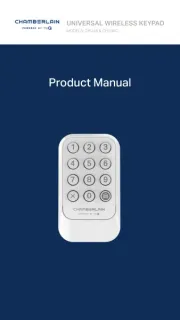
11 Augustus 2025
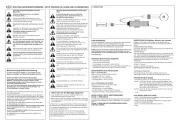
6 Juli 2025
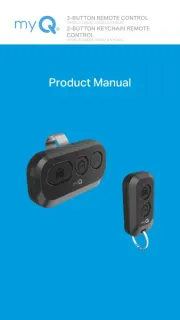
16 Juni 2025
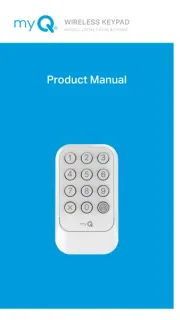
15 Juni 2025

12 November 2024

10 Juni 2024

27 Mei 2024

30 Juni 2023

16 Mei 2023
Handleiding Niet gecategoriseerd
- Cambium Networks
- Nanoleaf
- Belgacom
- Camille Bauer
- MARTOR
- AVer
- Energizer
- Clas Ohlson
- Snow Joe
- Star Belly
- Black Line
- Focal
- Snaptain
- GoldenEar Technology
- Melinera
Nieuwste handleidingen voor Niet gecategoriseerd
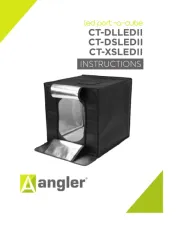
18 September 2025
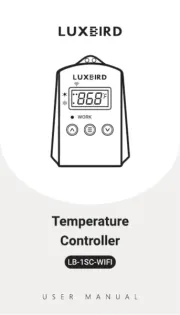
18 September 2025
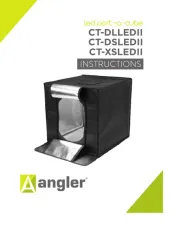
18 September 2025
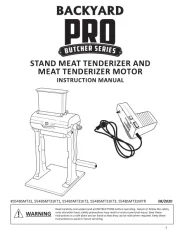
18 September 2025
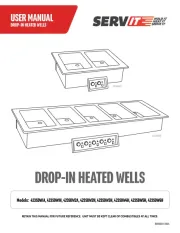
18 September 2025
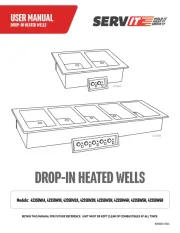
18 September 2025
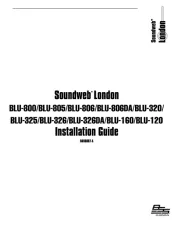
18 September 2025
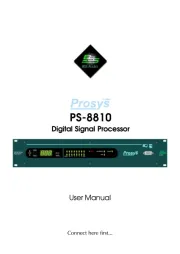
18 September 2025
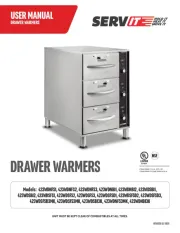
18 September 2025
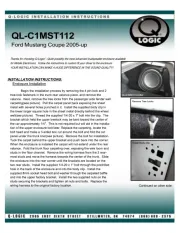
18 September 2025
